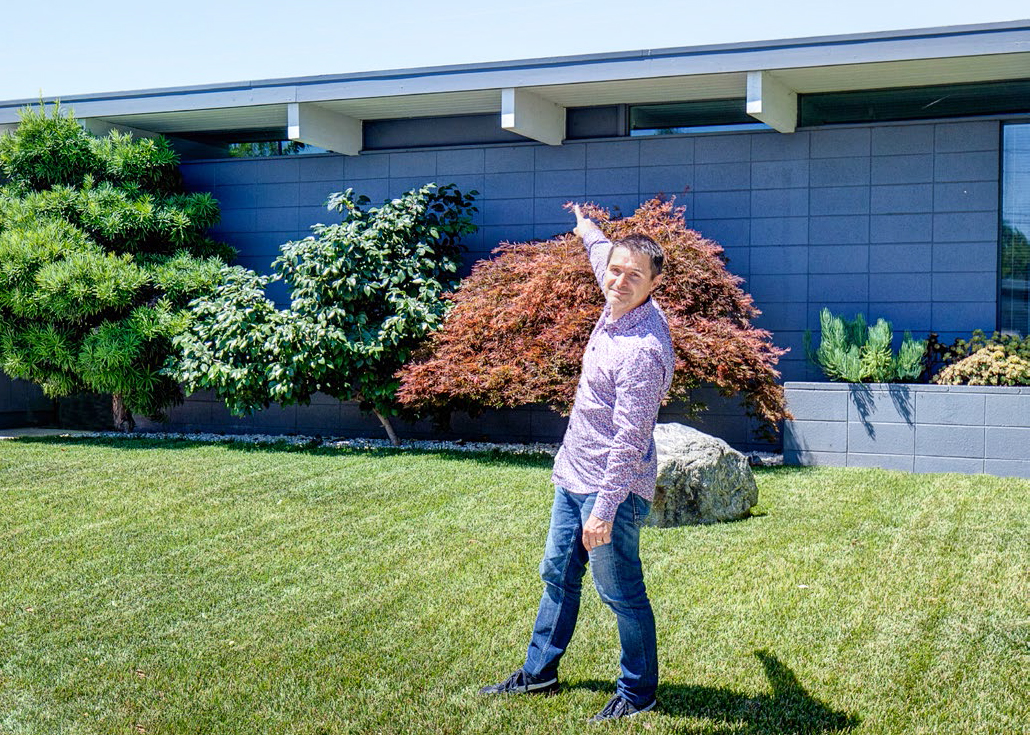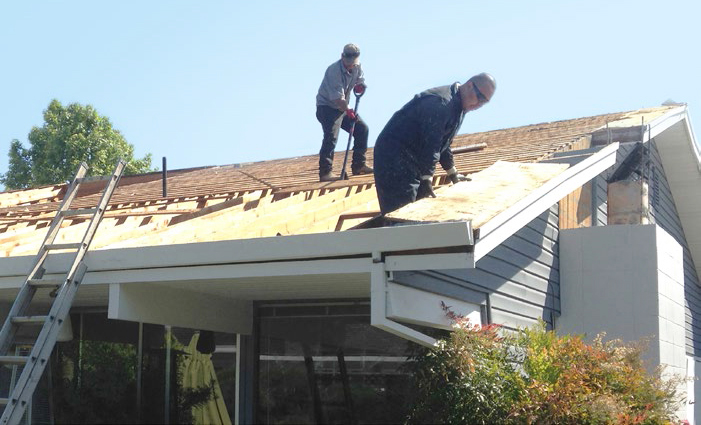Razing the Roof
 |
|
|
 |
|
|
 |
|
|
 |
|
|
When the ill-treated Eichler home across from Karolina Buchner and David Ross's recently restored beauty sold to a contractor, they feared the worst.
The home had begun life as a flat-roof model, but like many other houses in Joe Eichler's Fairglen tract in San Jose, over the years it had gained an out-of-character, peaked attic. Plus, the home was swamped in overgrowth.
"A flipper bought it," Karolina says. "We figured, they're going to tear it down."
Familiar story, no? No.
Instead of tearing the house down, "they took the peaked roof off," Karolina says. David adds: "It's a model Eichler now."
Fairglen is in the news these days because the largest portion of it was recently placed on the National Register of Historic Places. It is only the third Eichler neighborhood to win that honor, and the first since 2005, when two Palo Alto neighborhoods got the nod.
"We wanted to do something that is going to give us a sense, not of protection, but of recognition," says Bill Pfahnl, a longtime neighborhood event "instigator," as he calls himself, and one of the leaders of the National Register effort. "And hopefully the recognition prevents someone from coming in and scraping down a house and building a McMansion in this neighborhood."
It's not an easy process getting on the National Register. Research is needed to support a tract's historical value, the condition of every home must be documented, and most neighbors must back the move.
That can be a problem, as people fear loss of control and a drop in home values. But it wasn't a problem here. "Only two [residents] were in opposition," says Peter Hurd, who helped organize the effort.
Visiting the neighborhood suggests why there was so little opposition. Just ask Scott Hintz, a Fairglen resident since 1998.
"What you have here," Hintz says, "is a crazy sense of community."
Fairglen is a bit hard to define. There are three pockets of Eichler homes in the Willow Glen district of San Jose. The biggest cluster, 218 homes built from 1959 to 1964 and including on Fairglen Drive, is the only section that sought Register status.
A smaller, approximately 90-home cluster, a few blocks to the west, has homes of a similar vintage. Just to the north is a roughly 30-home tract that is often known as the 'Dry Creek Eichlers.'
Residents of the central part of Fairglen and the 90-home tract, sometimes called 'Hudson,' or 'Hudson-Comstock,' for the names of some of its streets, regard the separated areas as a single neighborhood.
"Everybody considers this part of the Fairglen neighborhood," says Chris Sanders, who lives on Comstock Lane in the 90-home cluster. Chris and his wife, Alicia, are good friends with people who live in the larger cluster, and Alicia, a drama teacher, was the MC and head of the talent show during some of the block parties that have taken place there.
Few Eichler neighborhoods are as conscious of their history as Fairglen. In large part that's because its history has never gone away. From early on and to today, neighbors have organized events and learned from old-timers who came before them.
For many years the Fairglen Art Festival defined the neighborhood. It began as a small, community event, with artists showing in driveways and garages, and became a regional colossus attracting up to 5,000 people.




